If you buy via a link on this page, we may receive a commission, at no extra cost to you.Learn more
Taking a look at the braided line used for crappie fishing, you have one of the oldest types of fishing line ever used. In the past, they used it to catch fish, but you have seen much of this fade away with the invention of the nylon line.
Even despite this, a braided line has witnessed a huge resurgence in recent years, and the biggest advantage that you get from the braided line comes from its strength.
Is braided line good for crappie fishing? The biggest advantage of the braided line comes from its strength, but the second biggest virtue of using a braided line comes from the fact that it doesn’t stretch. For crappie fishing, this means you could have some disadvantages, however. For example, the line will feel sensitive, and you will have to stay alert to everything that bumps your lure.
Second, the disadvantage comes from how you don’t necessarily need the strength of line to catch crappies because these are smaller fish that won’t bust the line often.
You could use this for crappie fishing, but the question becomes, why would you when you have much better options out there? However, you do have some cases where it might make sense for you, and we’re going to cover those cases.
Where Braided Line Makes the Most Sense
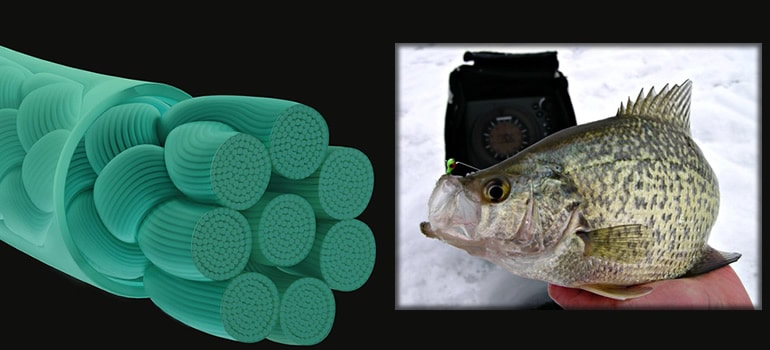
One of the places with the best applications for braided fishing lines comes from saltwater applications. Because of the braided line’s opaqueness and no-stretch characteristics, the line does well under these conditions. However, you still have a better choice with the fluorocarbon line if you were to choose to fish for crappies.
If You Plan to Use Braided for Crappies
For those who plan to use braided fishing lines for crappies, they should not go less than 15 pounds. To rig it, first, you put the bobber stopper on the line, and tie on around 15 inches of fluorocarbon line as the leader for the line because this works better.
The braided line sinks faster than the monofilament line because of its lack of stretching.
Related Aritlce: 10 Best Crappie Rods
Most commonly, another great application for crappie fishing happens in deepwater with braided lines. The drag on the braided line should get set properly because you don’t want to rip the hook through the mouth of the fish.
You might, for example, lock it down on baitcasters when you use a braided line. This will give you an estimated 15 pounds of drag. If it seems like you miss a lot of fish with a braided line, the culprit could be that you have to set the drag on it.
Times to Use Braided Line
You do have specific applications where the braided line makes the most sense.
For example, let’s say you pulled the boat up near some ironwood bushes. With the braided line, you can go jigging deep inside the foliage and drop a jig right down the center to reel in a fish.
The advantage of the braid in this scenario comes from how you can straighten or muscle the hook depending on the need.
You can pull the fish out of cover in this way. With the braided line, it depends on the type of fisherman that you are and whether it will suit your purposes.
Lack of Education about the Braided Line
Some of the issues that people have with braided fishing lines come from a lack of education about the subject. Luckily, it’s not terribly difficult to make a transition to the braided line.
Most anglers fear making the switch to the braided line because they fear that it will cost them an arm and a leg. First, let’s make something clear. You don’t need new rods and reels to use braided lines.
For this type of line, you will probably want softer rods for each category of bait.
Another myth that you might hear spouted off with a braided line is that you can only use it in murky waters where the fish won’t detect the line. This also has no basis in fact.
Related Aritlce: 10 Best Crappie Reels
Many fishermen have talked about how they used this line in water between 20 to 40 feet of visibility. The leader on the line helps to conceal it, and at the same time, it acts as a shock absorber.
The braided line has been used for more than power fishing. The line actively responds to improve the catch rate. In this way, you can feel more bites in the line, which will allow you to set the hook.
In this way, you can maneuver the bait around, and you don’t have to use quite as much physical effort. The deeper the water, the more pronounced the benefits.
Braid vs. Mono line
Some of the older fishing veterans have used the mono line their entire lives because the braided line wasn’t popular during their time. Both lines will have their pros and their cons. Braided lines have a smaller diameter than what you get with monofilament lines.
This makes it easier for you to fit more lines on the reel so that you can cast it further out. However, some people may not like that braided line costs more.
Some people also won’t find it worth the extra cost because you truly know how to use the braided line if you will be successful with it.
The Monofilament line remains the most popular choice even today for a variety of reasons. First, they’re easier to handle, and you can set the hook in the fish’s mouth more easily.
When monofilament doesn’t absorb water, it will remain naturally buoyant, which can be an advantage depending on the situation. Also, monofilament can be tied far more easily than braided lines. One of the biggest problems that you encounter with a braided line is that you can’t tie it easily.
The braided line feels slippery, and this isn’t conducive to tying knots with it. However, this line is so strong that you will have a hard time breaking it. Crappie will be highly unlikely to break it, but you do have some species of fish like the muskie and the northern pike that can snap the line with their teeth.
Having a Strong Rod Guide
Some fishermen say that braided lines will cut into the rod guide, especially some of the cheaper rods. For this reason, you may want to make sure that your rod can handle the braided line before putting it on.
To cut a braided line, you will want to carry scissors with you since cutting it with a clipper can be tougher. As the braided line starts to wear, they might get a fuzzy look to them, and while this doesn’t weaken them, not everyone likes this look.
Conclusion
All in all, we believe that each fisherman should decide for themselves if the braided line is the right fishing gear for them.
Some people love it because they can maneuver with it better, but you have other people who dislike the use of braided lines because of some of the disadvantages like it costs more, it’s more visible underwater and the no-stretch characteristics could be a disadvantage.
In particular, when fishing in saltwater or deep water, this is where the braided line can become more of an advantage to use.

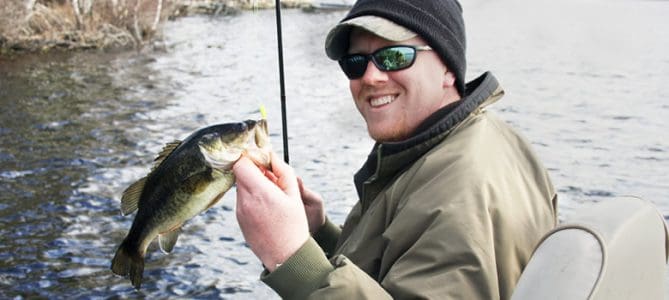
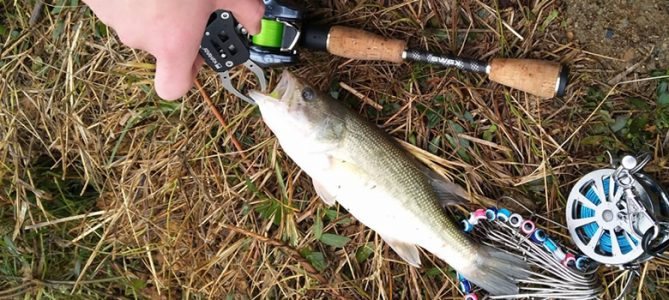
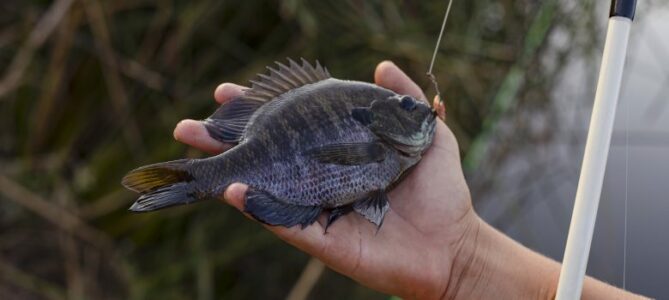
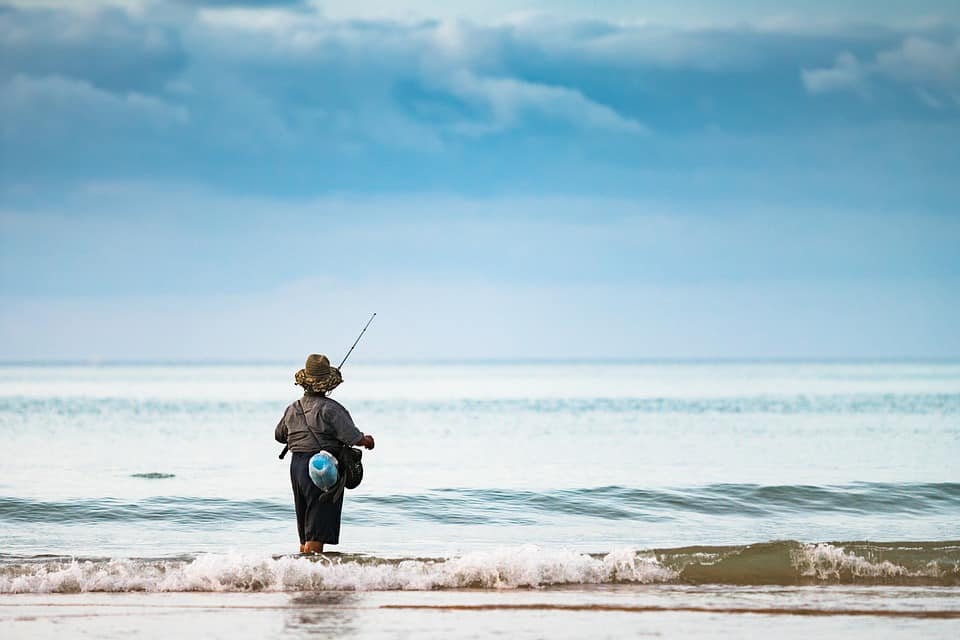
Avid crappie fisherman use to use Momo only now I use only flourcarden line. 4 pound kastking great line. I only use 1/16 jighead and this cast great.
I like using braid(10lb) with a leader(4lb) for fishing around docks and laydowns. If you get hung, you only lose your leader. Braided line management is mush better than mono as well. Many say with braid it’s easy to tear the hooks out of crappie mouths, however it’s all in setting your drag properly.